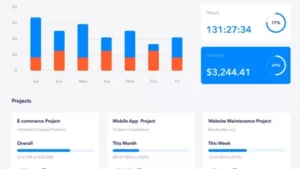As organisations and businesses evolve, so do expectations for them to embrace diversity and change. It is not just about ticking boxes and reaching quotas, but about building a better business from the core and reaping the tangible and intangible rewards.
‘Diversity’ might be a hot topic for HR departments across the globe, but in its practice, we unveil innumerable benefits, which inevitably lead to higher performance and increased profits. It’s as simple as this: a room full of people with similar experiences, perspectives and skill sets will ultimately cultivate a limited pool of thought compared to a group that is ranging in experience, culture, race, gender, sexual orientation, age, physicality, education, etc. Like most things in life, you get out what you put in, and diversity in the workplace is no exception.
It’s true that a business that is realistic and progressive in its representation of our multifaceted, modern society will benefit from a better reputation – and reputation in business is imperative – but aside from just waving the inclusion flag, companies can witness direct fiscal and performance improvements from diversity, too.
For example, a diverse workforce has higher levels of productivity and creativity, a broader range of skills, higher levels of employee development and engagement, a better understanding of the society in which they operate, and are therefore better equipped to bring about broader reach for the business.
Diversity and Profits
Numerous studies have shown that companies with a diverse workforce are more profitable than homogenous businesses. A 2018 McKinsey report, titled “Delivering Through Diversity” detailed that ‘gender and ethnic diversity are clearly correlated with profitability’, and companies in the top 25th percentile for gender diversity on their executive teams were 21% more likely to experience above-average profits. The same report deduced that diversity attracts top talent, thus improving productivity and increasing returns.
Diversity and Creativity
A strong workforce is one that compiles a range of differing perspectives and ideas in order to achieve a common goal. Employing people from different backgrounds and cultures is a smart way to inject a business with fresh and creative ideas, igniting a culture of innovation and outside-the-box thinking. With a greater, fresher array of ideas, employers can offer a wider range of possibilities and solutions to their customer. Additionally, and as somewhat of a byproduct, the exposure that employees will gain to the different work styles, skills, and perspectives of their co-workers will help keep interest peaked and foster an environment of synergy and creative flow.
Diversity and Employee Engagement/Productivity
As human beings, we thrive when we feel valued and included. Creating an environment in which employees from all walks of life are heard, encouraged and their uniqueness embraced, paves the way for higher levels of productivity and efficiency. Whether in a small team or large corporation, realising the value of each individual and what they can bring to the table is an effective way to bolster mutual respect, productive collaboration and team commitment, while simultaneously boosting profits and decreasing employee turnover.
Diversity and the Global Stage
It’s a global economy, and in order to compete on the world stage, it is imperative for businesses to reflect our heterogeneous society. A diverse workforce of assorted perspectives, experiences, languages, religions, etc. equips a business with the means to understand and communicate effectively with differing cultures, thus bridging potential gaps, driving economic development and broadening reach.
Diversity and Expanding the Talent Pool
An open mind is a company’s greatest asset when it comes to employment. The concept is simple; the more you have to choose from, the more likely you are to find exactly what you’re looking for, and narrowing the search can only serve to stunt innovation and progression. Moreover, a business that symbolises inclusivity and modern values will inevitably attract a greater talent pool. Promoting a diverse workforce from entry-level through to executive roles will allow more potential applicants to envision career progression within the company.
Challenges of Diverse Workplaces
While inclusion, equality, and fairness are non-negotiable components of a healthy work environment, extending to hiring, retention and termination practices, and even as the case for greater diversity becomes more compelling, there are some less straightforward challenges involved. For example, while blatant bigotry, stereotyping or discrimination is an intolerable issue, ingrained and unconscious bias is problematic in its complexity.
Diversity and Incongruent Culture
For businesses transitioning towards diversity, it is likely that there will be initial teething problems. Old habits, prejudices, and ways of thinking die hard, and introducing a new dynamic to the workforce may incur an initial ‘them and us’ situation. Such an environment will hinder integration and collaboration, and can eventually lead to conflict. Negative stereotypes or insensitive use of language within a heterogeneous team can be extremely damaging to company morale and can also interfere with performance, and subsequently, with revenue.
Diversity and Short-Term Cost
Diversification is a worthwhile business investment, and so it is natural that it may initially come at a price. For example, businesses may need to reevaluate their facilities to suit employees with limited mobility, or transgender employees that require less binary bathroom options. Paid leave policies may require revisions that will better and more equally support new parents. Practicing Muslims may need time and space for prayer, while people with mental health issues may require modifications to their working environment. Furthermore, when hiring people of different nationalities, businesses may be faced with visa and immigration fees, in addition to logistical challenges.
Diversity and Absence
Building a more inclusive and compassionate business can mean an increase in workplace absence. It’s an ageing population and businesses with a higher number of older employees tend to experience longer and more frequent absences, which can place an economic burden on the company. Concerns around hiring young women have long been discussed, and it’s true that maternity leave can impact the trajectory and finances of a business, particularly smaller ones. Not only can the absence of an employee on maternity (or indeed paternity) leave cause a ripple effect through the business’s productivity levels, but the reintegration of an employee post- long-term absence can also present difficulties. That being said, our society is made up of both the old and the young, and this ought to be reflected in our policies and our workforces.
We function as part of an increasingly pluralistic society, and diversity based employment serves to better the landscape for all people, from entry-level employees to global business owners.
We have experienced first hand the positive effects of diversity based employment. For example, a woman who took part in our programs entered the employment landscape not only as a new migrant but as a survivor of long-term domestic violence. With vital support in the form of paid work experience, language lessons, counselling and mentoring, she has since progressed to more senior, permanent roles, driving her towards financial independence, and presenting her as an asset to her industry rather than an on-going burden on Social Services.
So, although the transition to a diverse workplace may present obstacles, taking action to make diversity a business priority will uncover long-term rewards, both moral and financial.


